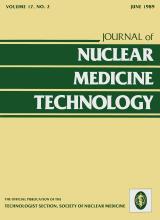Abstract
Indium-111-labeled radiopharmaceuticals are now being used clinically for cardiac imaging. Their use means that some of the imaging strategies employed for 201Tl and 99mTc must be reassessed to determine if there are alternatives that may provide improved image quality. The need for this reassessment results from the higher energy photons emitted by 111In. The theoretical implications of this difference in energies from 201Tl and 99mTc in terms of attenuation in the tissues of the patient’s body, the camera collimator, the side shielding of the camera, and the thickness of the crystal are presented as well as the results of an experimental investigation using four different collimators and four different energy windows. Finally, conclusions are drawn regarding collimator and energy window selection.







